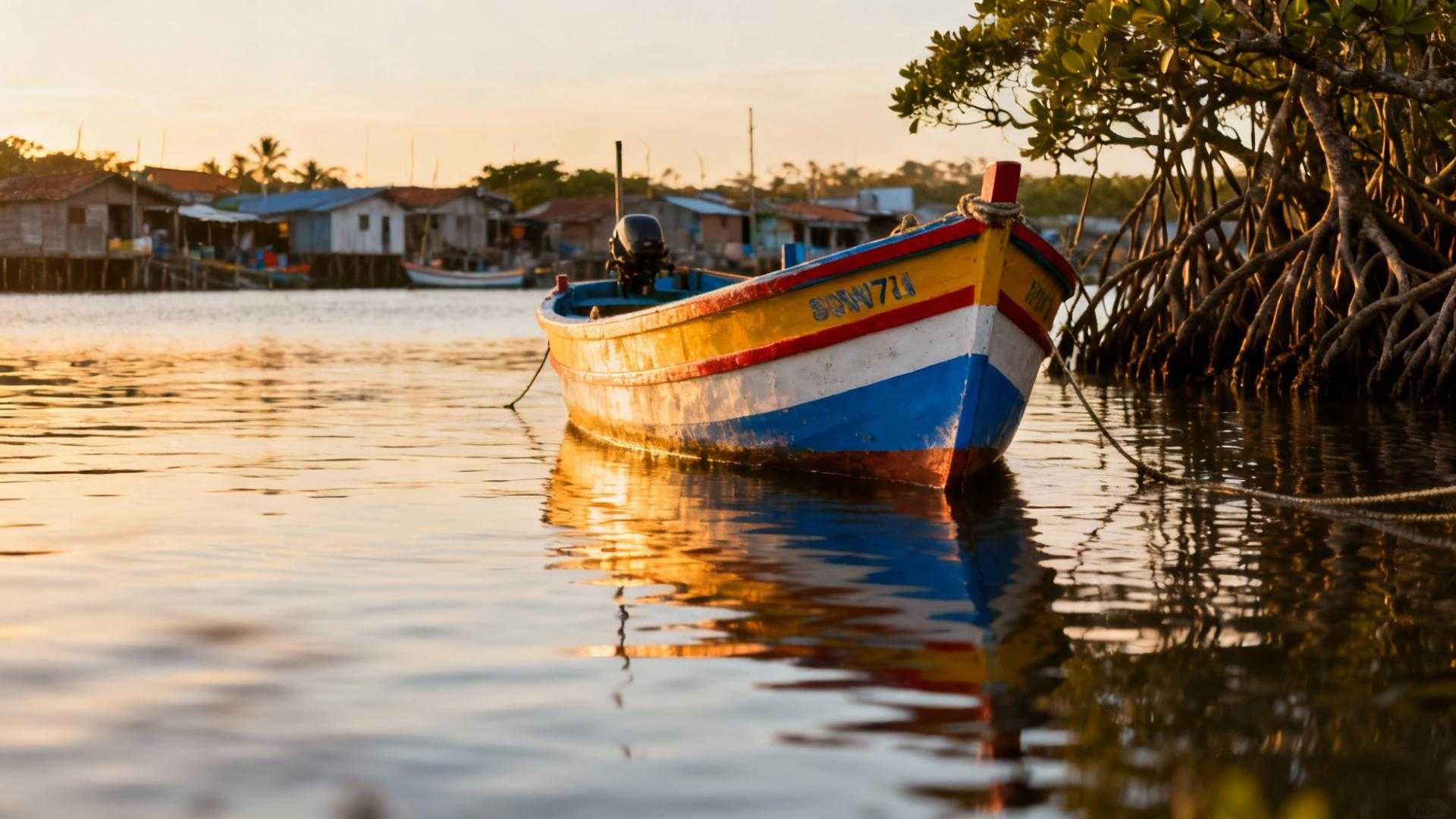Hidden along Brazil’s Amazon coast, Bragança remains one of South America’s most protected secrets. This colonial fishing port of 84,000 souls guards centuries-old traditions that locals fear mass tourism could destroy forever.
Portuguese settlers founded this coastal gem in 1622, creating a unique blend of Amazonian river culture and Atlantic fishing heritage. Today, traditional fishing families still launch wooden boats at dawn, following routes their ancestors carved through mangrove channels four centuries ago.
But whispers of tourism development proposals have community leaders deeply concerned. They’ve watched neighboring coastal towns lose their authentic character to cruise ship crowds and beachfront resorts that prioritize profit over cultural preservation.
The fishing traditions that define authentic Bragança
Ancient techniques passed through generations
Local fishermen still use traditional curral fishing traps — elaborate wooden structures that channel fish into capture areas during high tide. These intricate systems require generations of tidal knowledge and represent sustainable fishing practices that predate modern conservation by 400 years.
Community-controlled marine sanctuaries
Fishing families have established unofficial protected zones where certain species breed undisturbed. Unlike government-imposed regulations, these community rules carry the weight of cultural tradition and social pressure that outsiders might never understand or respect.
The colonial heritage tourism threatens
Portuguese architecture hidden from guidebooks
Bragança’s historic center contains 17th-century colonial buildings that rival Paraty’s famous architecture, yet remain virtually unknown to international travelers. Local families still inhabit these structures, maintaining them as living heritage rather than tourist attractions.
Sacred festivals outsiders could disrupt
The annual Marujada festival celebrates the town’s patron saint through traditional dances and music that fishing families have preserved since colonial times. Community elders worry that tourist cameras and commercial vendors could transform this sacred celebration into a performative spectacle.
Why locals resist tourism development
Economic fears behind the protection
Fishing families earn steady incomes from sustainable practices, with many households generating $800-1,200 monthly from traditional methods. They fear tourism jobs would pay less while destroying the marine resources their livelihoods depend on completely.
Cultural preservation over tourist dollars
Community leader Maria Santos explains that previous tourism attempts brought outside developers who ignored local input and environmental concerns. Residents watched coastal ecosystems suffer damage that took years to recover from these failed ventures.
The authentic experience worth protecting
Mangrove expeditions with fishing families
A handful of fishing families offer sunrise canoe journeys through pristine mangrove channels where pink dolphins surface alongside traditional boats. These intimate experiences cost $25 per person and directly support families who’ve fished these waters for generations.
Coastal cuisine that tells cultural stories
Local restaurants serve dishes like caranguejo no bafo (steamed crab) prepared exactly as Portuguese colonists learned from indigenous communities. Each recipe carries cultural significance that extends far beyond simple sustenance into identity and belonging.
Visiting Bragança requires understanding that you’re entering a living community, not a tourism destination. The October dry season offers optimal weather for respectful exploration, with daytime temperatures reaching 86°F and minimal rainfall disrupting outdoor activities.
Access remains deliberately challenging — no direct flights serve the area, requiring a 4-hour drive from Belém or irregular river transport connections. This natural barrier protects authentic culture much like remote Pacific islands shield themselves from mass tourism through geographic isolation.
Those seeking authentic Brazilian coastal experiences might consider similar small communities that balance preservation with respectful visitor access. The key lies in supporting local families directly rather than external tourism operators.
Accommodations remain basic but authentic — family-run pousadas charge $35-50 nightly and include home-cooked meals featuring daily catch. Visitors must speak basic Portuguese and respect fishing schedules that determine community rhythms.
Perhaps Bragança’s greatest treasure isn’t what visitors can take from it, but what they might learn about communities protecting cultural heritage through selective tourism resistance. This coastal sanctuary offers a rare glimpse into how traditional societies balance economic opportunity with cultural preservation.
Planning your respectful visit to Bragança
When should I visit Bragança for the best weather?
The dry season from July through December offers optimal conditions, with October providing ideal temperatures around 86°F and minimal rainfall affecting outdoor activities or transportation.
How do I reach Bragança without contributing to overtourism?
Take the 4-hour drive from Belém rather than pushing for direct flight access. This journey time helps maintain the destination’s protected character while supporting local transportation services.
What’s the appropriate way to interact with fishing families?
Learn basic Portuguese phrases, respect fishing schedules, and book experiences directly with families rather than through external tour operators to ensure community members receive fair compensation.
How much should I budget for an authentic stay?
Expect $35-50 nightly for family-run accommodations including meals, $25 for guided mangrove expeditions, and additional costs for traditional meals and cultural experiences that directly support local families.
Can I photograph the Marujada festival?
Always ask permission before photographing any cultural or religious celebrations, and respect if families prefer to keep certain traditions private from outside documentation.
